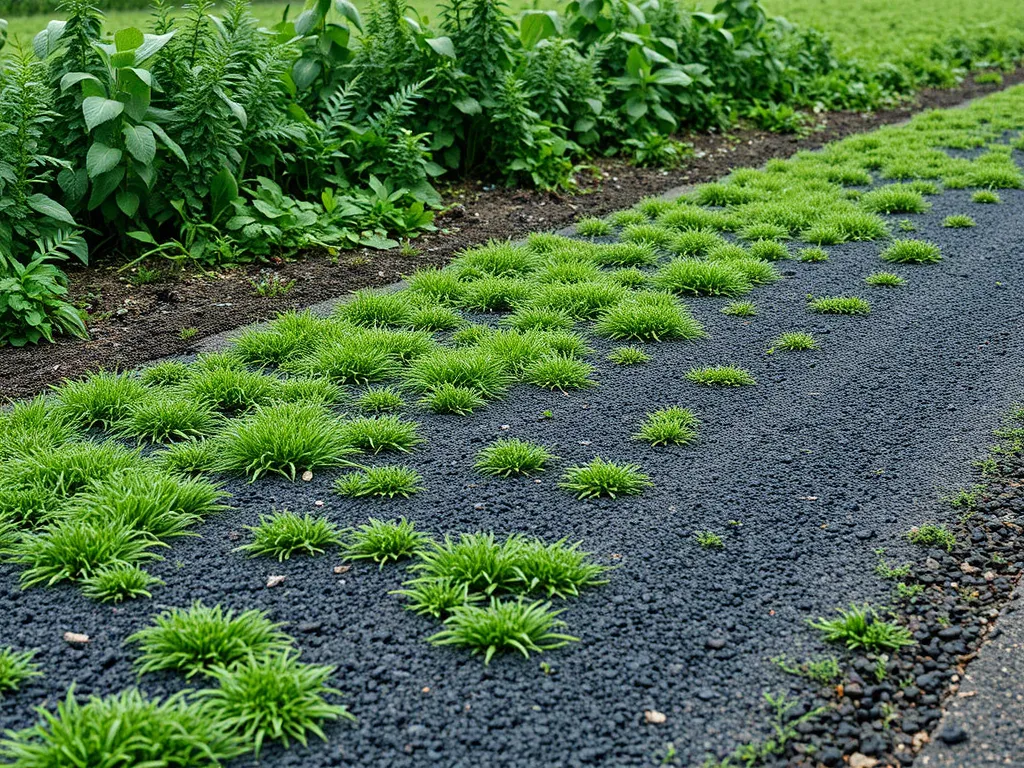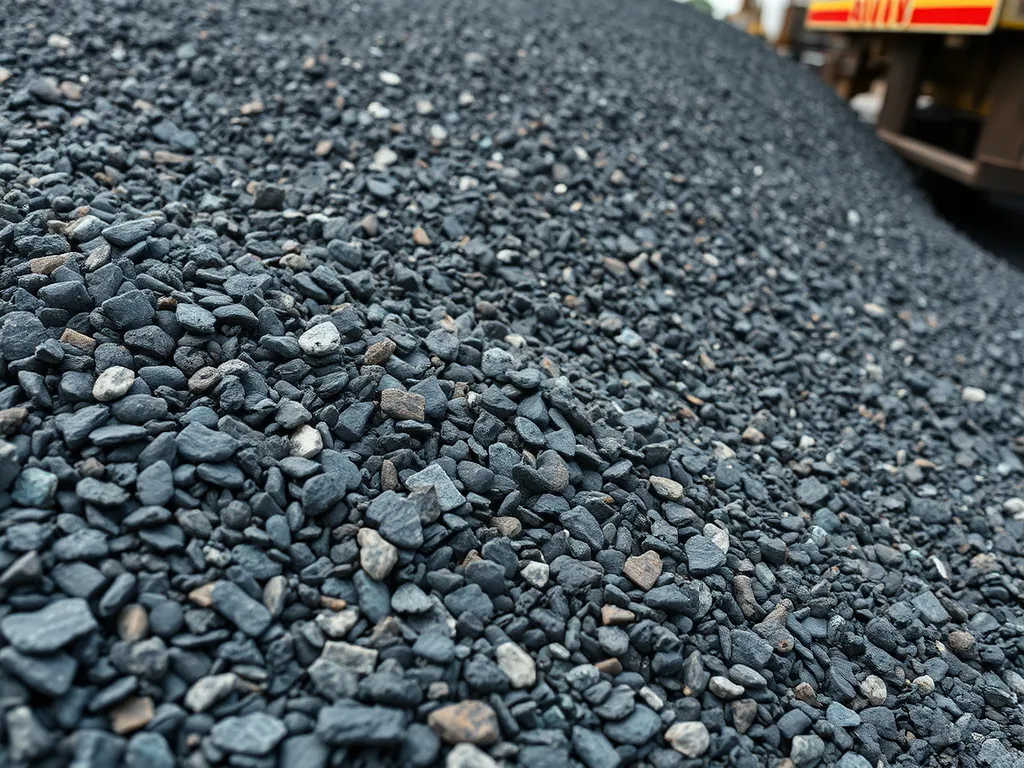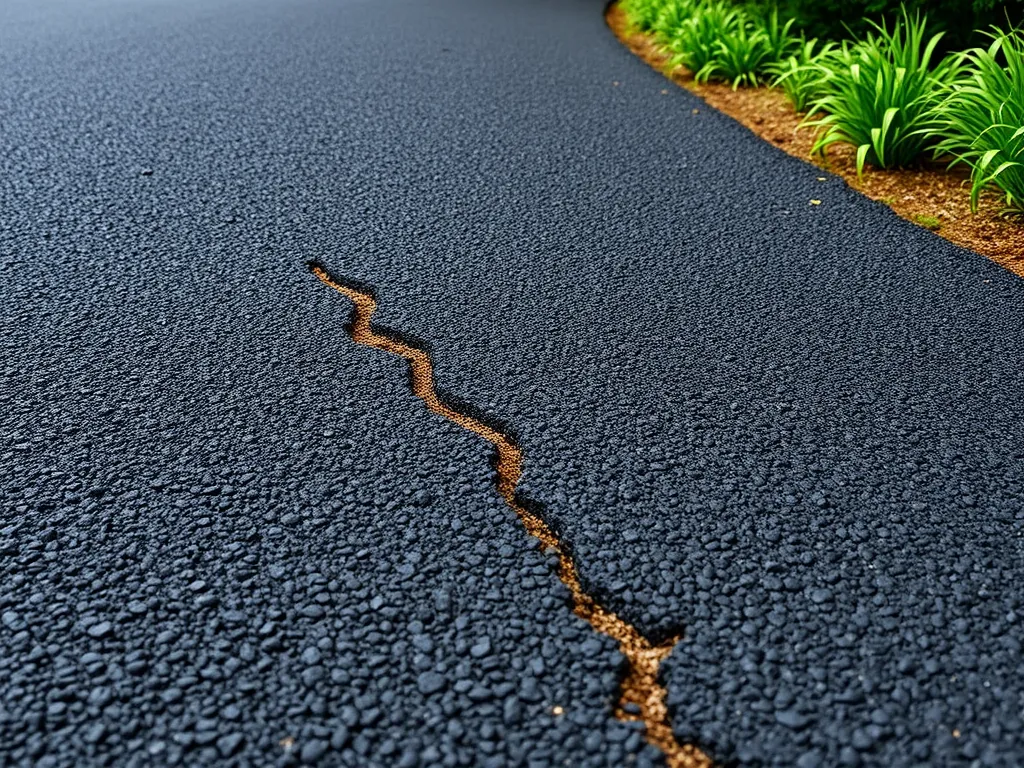Are Asphalt Millings Good for a Driveway? Pros, Cons & Cost Breakdown
Published on: June 3, 2025 | Last Updated: April 14, 2025
Written By: George Voss
Asphalt millings—recycled pavement material made of crushed aggregates and bitumen—are a budget-friendly driveway option costing 30-60% less than traditional asphalt. They resist potholes, allow water drainage, and handle light traffic, but may erode, require frequent maintenance, and last 7-12 years. Ideal for rural driveways or temporary access roads, they’re less durable than fresh asphalt but outperform gravel in stability.
This guide compares asphalt millings to gravel and traditional asphalt, breaks down installation steps, and explains maintenance needs. You’ll learn how to assess soil drainage, control weeds, and decide if millings suit your climate, budget, and vehicle types.
Contents
- What Are Asphalt Millings?
- Pros Of Using Asphalt Millings for Driveways
- Cons Of Using Asphalt Millings for Driveways
- Cost Analysis: Asphalt Millings Vs. Gravel Vs. Traditional Asphalt
- Installation Process for Asphalt Millings Driveways
- Maintenance Tips for Asphalt Millings Driveways
- Environmental Impact Of Asphalt Millings
- Alternatives to Asphalt Millings for Driveways
- Frequently Asked Questions
- Closing Thoughts
- Useful References for You:
What Are Asphalt Millings?
Asphalt millings are recycled material made by grinding old asphalt surfaces. Milling machines remove the top layer of worn-out roads or parking lots, creating small chunks ranging from 1-3 inches in size. These millings contain crushed stone (aggregate) and bitumen—the sticky black binder that holds traditional asphalt together.
Known as RAP (Recycled Asphalt Pavement), millings retain 3-7% residual bitumen. This leftover binder allows millings to bond when compacted, forming a semi-solid surface. Unlike gravel, which shifts under pressure, millings lock together for better stability.
- Composition: 90-95% recycled aggregate + 5-10% aged bitumen
- Production: Created during road resurfacing projects using cold planers
- Texture: Rough, angular pieces with a mix of fine particles and larger chunks
For driveways, millings offer a budget-friendly alternative to fresh asphalt. They eliminate the need for new bitumen or virgin aggregates, cutting material costs by 40-60%. Contractors often use them for rural driveways, access roads, or temporary surfaces due to their durability and permeability.
Ready to see how these recycled materials stack up against other options? Let’s break down the pros of using asphalt millings for driveways.
Pros Of Using Asphalt Millings for Driveways
Asphalt millings offer unique advantages for residential and commercial driveways. Let’s break down the key benefits.
Cost-effectiveness
Asphalt millings cost $10-$20 per ton, up to 80% cheaper than traditional asphalt ($100-$200 per ton). Savings start during installation since millings require no heat or fresh binder. Local municipalities often sell reclaimed millings at lower rates, cutting material costs further.
| Material | Cost per Ton |
|---|---|
| Asphalt Millings | $10-$20 |
| Gravel | $15-$40 |
| Traditional Asphalt | $100-$200 |
Durability and Resistance to Potholes
Recycled millings contain bitumen, a sticky binder that re-adheres when compacted. This creates a semi-flexible surface resistant to cracks and potholes. Properly installed millings withstand freeze-thaw cycles better than gravel, reducing seasonal repairs.
Recycled Material Benefits
Using asphalt millings for driveways diverts 90 million tons of waste from landfills annually. Millings reuse 95% of original road materials, including aggregates and bitumen. This eliminates the need for mining new stone or producing fresh binder, cutting CO₂ emissions by 20% per ton.
Improved Drainage Properties
Loose millings allow water to permeate at rates up to 300 inches per hour, 5x faster than solid asphalt. This reduces pooling and minimizes erosion risks. For regions with heavy rainfall, graded millings direct runoff away from foundations.
While these benefits make asphalt millings a practical choice, potential drawbacks must be considered.

Cons Of Using Asphalt Millings for Driveways
Asphalt millings work for driveways but have downsides. Know the risks before you choose this path.
Limited Aesthetic Appeal
Asphalt millings lack the smooth, jet-black look of fresh asphalt. The mix has a rough, patchy gray tone with visible stone bits. Neighbors with paved driveways may see your millings as less polished. Color fades faster under sun and rain.
Potential for Erosion and Water Pooling
Loose millings shift over time, leading to ruts or dips. Heavy rain can wash away thin layers if the base isn’t packed tight. Sloped driveways face more runoff issues. Poor drainage may leave puddles that weaken the surface.
Weed Growth and Maintenance Challenges
Gaps between millings let weeds sprout. Roots push through the layers, causing cracks. You’ll need sprays or manual pulling every 3-6 months. Without a seal coat, oil from old asphalt may stain shoes or car tires.
Longevity Concerns (10-year Lifespan)
Most millings last 8-12 years before needing repair. Hot summers soften the surface, while frost heaves split it in winter. High-traffic zones wear down 30% faster. Compare this to fresh asphalt, which holds 15-20 years with care.
Costs matter too—let’s break down how millings stack up against gravel or new asphalt.
Also See: Advantages Of Asphalt Vs Concrete for Colder Climates
Cost Analysis: Asphalt Millings Vs. Gravel Vs. Traditional Asphalt
Picking what to lay on a driveway impacts both your wallet and long-term satisfaction. Costs vary by material type, installation needs, and how long it lasts. This breakdown gives clarity for folks thinking about using asphalt millings for driveways.
Upfront and Long-term Cost Comparison
Asphalt millings typically run $10-$20 per ton, making them 30-50% cheaper than traditional asphalt ($100-$200 per ton). Gravel sits at $10-$50 per ton but lacks binding agents found in millings. A millings driveway costs $1.50-$3.00 per square foot installed, vs. $2-$5 for gravel and $4-$7 for traditional asphalt.
| Material | Cost per Ton | Installation Cost per Sq.Ft. | Lifespan |
|---|---|---|---|
| Asphalt Millings | $10-$20 | $1.50-$3.00 | 8-12 years |
| Gravel | $10-$50 | $2-$5 | 4-6 years |
| Traditional Asphalt | $100-$200 | $4-$7 | 15-20 years |
Long-term, millings need topping up every 3-5 years. Gravel requires annual raking and fresh layers. Traditional asphalt lasts longest but demands costly full replacements.
Asphalt Millings Vs. Gravel Driveways
Gravel shifts under weight, forming ruts that trap water. Millings lock tight when compacted, cutting rutting risks. Annual gravel maintenance adds $500-$1,000 per 1,000 sq.ft., while millings need $200-$400 every 5 years for sealants.
Millings also handle heavy trucks better. A 4-inch layer supports up to 8,000 lbs per axle, vs. gravel’s 5,000 lbs limit. For snowy areas, millings stay put during plowing; gravel scatters, requiring frequent raking.
Asphalt Millings Vs. Recycled Asphalt Pavement
Millings come from grinding old roads, while recycled asphalt pavement (RAP) is crushed plant-mixed material. RAP costs $15-$30 per ton but needs fresh bitumen (adding $50-$100 per ton) for binding. Millings often skip this step, saving 20-30% on installation.
Without additives, RAP lasts 10-15 years but may crack without proper grading. Millings last 8-12 years but bond naturally due to residual tar. Adding a bonding agent (like asphalt emulsion) boosts millings’ lifespan by 3-5 years for $0.50-$1.00 per sq.ft.
How you install millings affects cost savings. Up next: grading tricks and compaction tools that lock in value.

Installation Process for Asphalt Millings Driveways
Using asphalt millings for driveways requires precise methods to ensure structural integrity. Correct installation techniques directly impact performance, drainage, and lifespan. Let’s break down critical steps.
Preparing the Base Layer
A stable base prevents shifting and cracking. Start by excavating 8-12 inches of soil. Add 4-6 inches of crushed stone or gravel, graded at a 2% slope for drainage. Use geotextile fabric in areas with soft soil to prevent mixing with the base. Compact this layer to 90% density before adding millings.
| Base Material | Recommended Depth | Cost per Ton |
|---|---|---|
| Crushed Stone | 4-6 inches | $12-$18 |
| Gravel | 3-5 inches | $10-$15 |
Proper Compaction Techniques
Compaction binds millings into a solid surface. Spread millings in 2-3 inch layers. Achieve best results with a vibratory roller or plate compactor, applying 3-5 passes per layer. Maintain 3-5% moisture content during compaction—dry material won’t bond. Target 95% Proctor density to resist potholes.
Role Of Bonding Agents in Stability
Bonding agents boost cohesion in asphalt millings for driveways. Apply liquid asphalt emulsion (3-5% by weight) or Portland cement (2-4%) after final compaction. These additives fill gaps between millings, reducing erosion and raveling. Expect a 15-20% cost increase but a 30% longer lifespan.
Proper installation sets the stage for long-term performance—but maintenance keeps it intact. Let’s explore care strategies next.
Maintenance Tips for Asphalt Millings Driveways
Proper care extends the lifespan of driveways built with asphalt millings. Follow these practices to keep surfaces stable, functional, and resistant to common issues.
Regular Compaction and Surface Leveling
Recompact millings every 12-18 months with a vibratory roller or plate compactor. This prevents loose material from shifting under vehicle weight. Focus on high-traffic areas like entrances. Level low spots promptly—add fresh millings and compact to avoid potholes. Warm weather (above 50°F) improves binding during compaction.
Managing Drainage and Water Runoff
Maintain a 2-4% slope across the driveway surface to direct water away. Check drainage ditches or gravel trenches monthly for debris. If pooling occurs, regrade affected zones or install perforated PVC pipes beneath the millings. Proper drainage preserves the base layer—a key factor in why asphalt millings work for driveways.
Controlling Weed Growth
Apply granular pre-emergent herbicide twice yearly—spring and fall—to block weeds. Avoid liquid herbicides; they can break down the recycled bitumen binder. Pull persistent weeds manually, ensuring roots are fully removed. Keep edges clean to deter invasive plants like crabgrass.
Following these steps ensures your asphalt millings driveway remains cost-effective and durable. Next, let’s examine how this material supports eco-friendly construction practices.

Environmental Impact Of Asphalt Millings
Choosing asphalt millings for driveways directly affects ecosystems and resource use. This recycled material balances practicality with lower environmental strain compared to virgin asphalt or gravel.
Sustainability Through Recycling
Asphalt millings come from reclaimed asphalt pavement (RAP), a mix of crushed aggregates and aged bitumen. Recycling RAP cuts virgin material needs by up to 95%, saving 60 million barrels of bitumen yearly in the U.S. Reusing millings slashes energy use by 50-75% versus new asphalt production, lowering CO₂ emissions by 1.5 tons per 100 tons recycled. Driveways built with millings reuse existing resources, aligning with EPA’s sustainable materials management goals.
Reduction Of Landfill Waste
Over 90 million tons of asphalt waste enter landfills annually without recycling. Using millings for driveways diverts 2-3 tons of material per 100 sq.ft. installation. This prevents groundwater contamination from bitumen leaching and reduces mining for fresh aggregates. Municipalities save $15-$40 per ton in landfill fees, passing cost benefits to homeowners. A millings driveway repurposes 100% of RAP, creating a closed-loop system that minimizes environmental harm.
While asphalt millings offer clear eco-advantages, comparing them to other driveway materials reveals trade-offs in performance and budget.
Alternatives to Asphalt Millings for Driveways
While asphalt millings work well for many driveways, other materials might better suit specific needs. Let’s explore three common substitutes.
Recycled Concrete
Recycled concrete consists of crushed concrete debris from demolished structures. It costs $10-$20 per ton, matching asphalt millings’ price range. Unlike millings, recycled concrete lacks bitumen binding, leading to a looser surface. Sharp edges in the crushed pieces can cause tire wear if not properly compacted. Requires a mechanical compactor during installation to prevent shifting. Best for temporary driveways or regions with low traffic.
Crushed Stone
Crushed stone offers a natural look with sizes ranging from 3/4″ to 1.5″ gravel. Priced at $15-$30 per ton, it provides better drainage than asphalt millings due to larger gaps between stones. No binding agents mean frequent raking to maintain even surfaces. Ideal for rural areas needing high permeability. Use geotextile fabric beneath the stone to prevent soil mixing. Lasts 15+ years with minimal upkeep.
| Material | Cost Per Ton | Lifespan | Key Trait |
|---|---|---|---|
| Asphalt Millings | $12-$18 | 8-12 years | Self-binding |
| Recycled Concrete | $10-$20 | 10-15 years | Sharp edges |
| Crushed Stone | $15-$30 | 15+ years | High drainage |
Cold Mix Asphalt
Cold mix asphalt contains pre-coated aggregates and bitumen emulsion, sold in bags or bulk. Costs $40-$60 per ton but requires no heating equipment during installation. Sets faster than millings, achieving full strength in 2-3 days. Prone to cracking in freezing temperatures and degrades faster under heavy vehicles. Suitable for quick driveway repairs or temporary patches before full paving.
Choosing between these materials? Consider traffic levels, climate, and budget. Next, let’s tackle common questions about asphalt millings driveways.

Frequently Asked Questions
What Are the Cons Of Asphalt Millings Driveways?
Asphalt millings can present challenges such as limited aesthetic appeal, potential for erosion and water pooling, weed growth issues, and a shorter lifespan compared to traditional asphalt. It’s important to weigh these factors against the benefits before making a decision.
Will Water Drain Through Asphalt Millings?
Yes, asphalt millings offer excellent drainage properties due to their loose composition. The material allows water to permeate quickly, reducing pooling and the risk of erosion, making it suitable for areas that experience significant rainfall.
How Do Asphalt Millings Compare to Gravel Driveways?
Asphalt millings generally provide better stability than gravel, as they bond together when compacted, reducing the likelihood of rutting and shifting. Millings also support heavier loads and require less frequent maintenance compared to gravel, which tends to require annual upkeep to maintain its surface.
Is a Bonding Agent Necessary for Installation?
While a bonding agent is not strictly necessary, applying one can enhance the stability and longevity of the asphalt millings driveway. It helps fill gaps and reduces erosion, potentially extending the lifespan of the driveway by several years.
Where Can I Find Free or Affordable Asphalt Millings?
Many local municipalities and road construction companies offer asphalt millings at low costs or even for free. It’s advisable to contact local public works departments or look for recycling centers that handle asphalt to find available sources.
Closing Thoughts
Asphalt millings present an intriguing option for driveways. They offer cost savings, durability, and sustainable benefits through recycling. Yet, potential drawbacks, including aesthetic challenges and maintenance, should not be overlooked.
Carefully weigh the pros and cons based on your driveway needs, local climate, and maintenance capabilities. If managed properly, asphalt millings can create a resilient and eco-friendly surface.
For more information and resources on asphalt options, visit Asphalt Calculator USA.
Useful References for You:
- Yoder, E. J., & Witczak, M. W. (1975). Principles of Pavement Design (2nd ed.). New York, NY: Wiley.
- 4 Pros and Cons of Asphalt Millings – rockasphalt.com
- Qustions on using Recycled Asphalt Millings to refresh old gravel private drive – TractorByNet
- Let’s Talk Driveways: Anyone have crushed asphalt millings?| Grassroots Motorsports forum |
- Asphalt Millings vs Gravel: Choosing the Best Driveway Material for Yo – Asphalt Industrial


